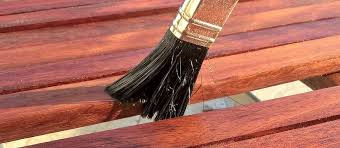Is your once beloved composite decking showing signs of wear and tear due to prolonged exposure to the elements? If so, it might be time to consider painting it to give it a fresh new look. Painting composite decking can be a cost-effective and easy solution to refresh your outdoor living space, whether you want to restore its former shine, add a pop of color, or cover up unsightly blemishes. So say goodbye to the dull and faded appearance and hello to a beautiful, vibrant deck you’ll love for years to come.
Can You Paint Your Composite Decking?
When contemplating whether or not to paint composite decking, it’s important to consider the generation of the material. Early-generation composite decking can be painted, but newer versions that are equipped with PVC caps or shells encasing the composite core are challenging to paint. Although these caps provide easy maintenance, they can make it challenging for paint or stain to adhere. Also, attempting to paint or stain modern composite decking may cause warranty avoidance. So take the time to determine which type of composite decking you have before deciding if painting is viable.
The situation is different with older composite decking that was produced before 2010 when there were no additions of plastic caps or shells. These composite materials are exposed and could hold a coat of paint or stain with appropriate preparation. It could be a great way to revive its appeal and increase its already extensive lifespan. Paint composite decking today, and it could look as good as brand new.
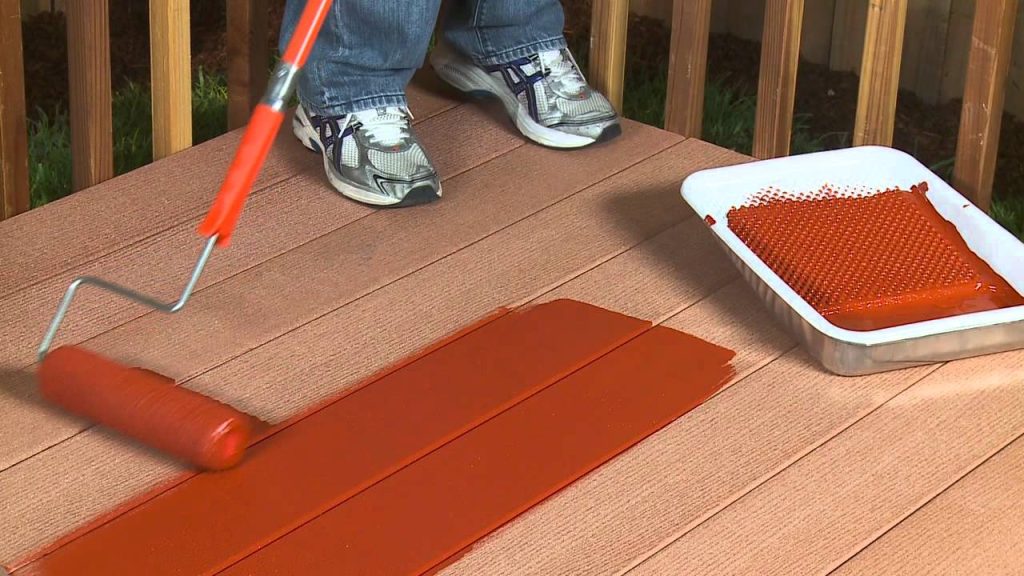
Examine the cut end of a deck board to ascertain if your composite decking is suitable for painting or staining. Early-generation decking will exhibit the same color at the top and bottom. However, current options feature a thin veneer or shell covering the gray or brown composite core. The former kind allows for paint or stain adhesion, while the latter won’t. So, before conducting any painting or staining activities, you must confirm the generation of composite decking you own.
It is advisable to contact the composite decking manufacturer to validate whether painting the material is permitted, what the recommended procedure is, and whether it would impact the warranty. By doing so, you can ensure that all painting-related activities on the composite decking adhere to the warranty terms and mitigate the risk of causing damage.
Essential Factors to Keep in Mind Before Painting or Staining Composite Decking
After confirming that your composite decking is fit for painting or staining, the initial prep work involves clearing the deck by removing furniture and plants, then deep cleansing the deck surface. It’s important to understand that uncapped composite deck boards require different cleaning methods and supplies than capped decking. Refrain from using a pressure washer on non-capped decking as it can cause surface damage, and avoid using harsh chemicals, including cleaners meant for use on capped composite decking, on older composites. Preferably, select cleaning products well-suited for wood decks.
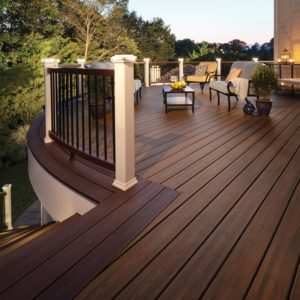
Once you’ve finished cleaning the deck surface, it is crucial to let it dry completely, which could take a few days, depending on environmental factors. To determine if the deck has dried, lay a 1-foot square piece of clear plastic sheeting over the surface, securing it with tape on all four sides. If there is no sign of condensation under the plastic sheeting after several hours, then the deck is ready for painting or staining.
When the weather forecast is dry (no rain), it’s important to mask off the areas you don’t want to paint and apply a premium-quality stain or exterior paint appropriate for decks. These are easily accessible from major retailers. For a more durable finish, consider opting for pricier two-part coating solutions specifically designed for uncapped composite decking.
Essential Tools and Materials for Deck Painting and Staining
To stain or paint your composite decking, you will require the following materials:
- Hose with spray attachment
- Soft bristle brush (for cleaning)
- Deck cleaner
- Paint roller, brush, pad, or sprayer
- Primer (if desired or required)
- Deck stain or exterior paint that is suitable for deck surfaces.
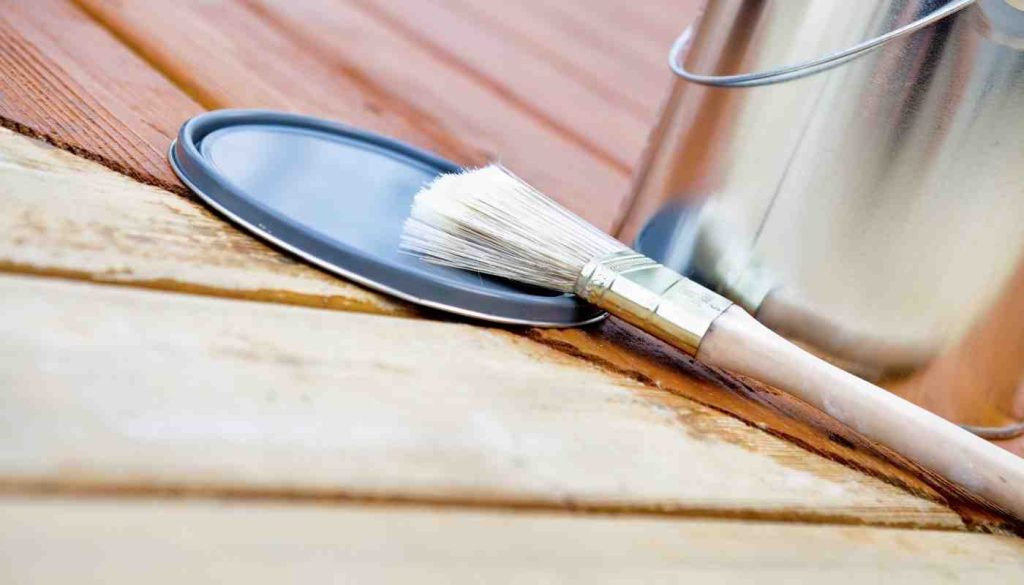
Steps to Paint Composite Decking
Following these simple guidelines, you can easily paint composite decking in hassle-free steps.
Step 1: Removing or Covering Plants: A Crucial Step Before Coating Your Deck
To ensure a smooth and hassle-free experience while painting composite decking, it’s essential to eliminate any potted plants and cover the plants that are either on or overhanging your deck. This will give you unobstructed access to the decking surface and prevent any debris from falling onto it during the painting process.
Step 2: Thoroughly Clean Your Composite Decking
To clean your composite deck, you need to remove dirt and debris by scrubbing the surface with soapy water and a soft-bristled brush. Don’t use a power washer, as it may damage the decking material.
You can use a wood deck cleaner for stubborn stains like mold and mildew. Make sure to read and follow the instructions on the label. Avoid harsh chemicals or bleach on your composite deck, including cleaners for capped composite decking.
Let the deck dry completely, which may take a few days, depending on the weather. Before you paint or stain the deck, make sure it’s fully dry by using a simple test.
Step 3: Prime the Deck
When painting composite decking, it’s worth noting that certain paints and stains may not require a primer coat. However, employing an acrylic latex exterior primer for decks is advisable for optimal coverage and better hiding power. You can apply this primer using a brush, roller, or combination of both, working along the length of the planks. You can opt for a roller with an extension handle to minimize back pain and discomfort.
Step 4: Paint Your Composite Deck
After the primer coat dries off, you can proceed to add the paint similarly to the primer. If you need better coverage, apply a subsequent coat, but be sure the first coat is entirely dry before you start the second one. The required drying time may differ based on the product you use, so make sure to check the product label for recommended drying time.
It’s essential to avoid painting your composite decking in direct sunlight, which can cause the paint to dry too quickly.
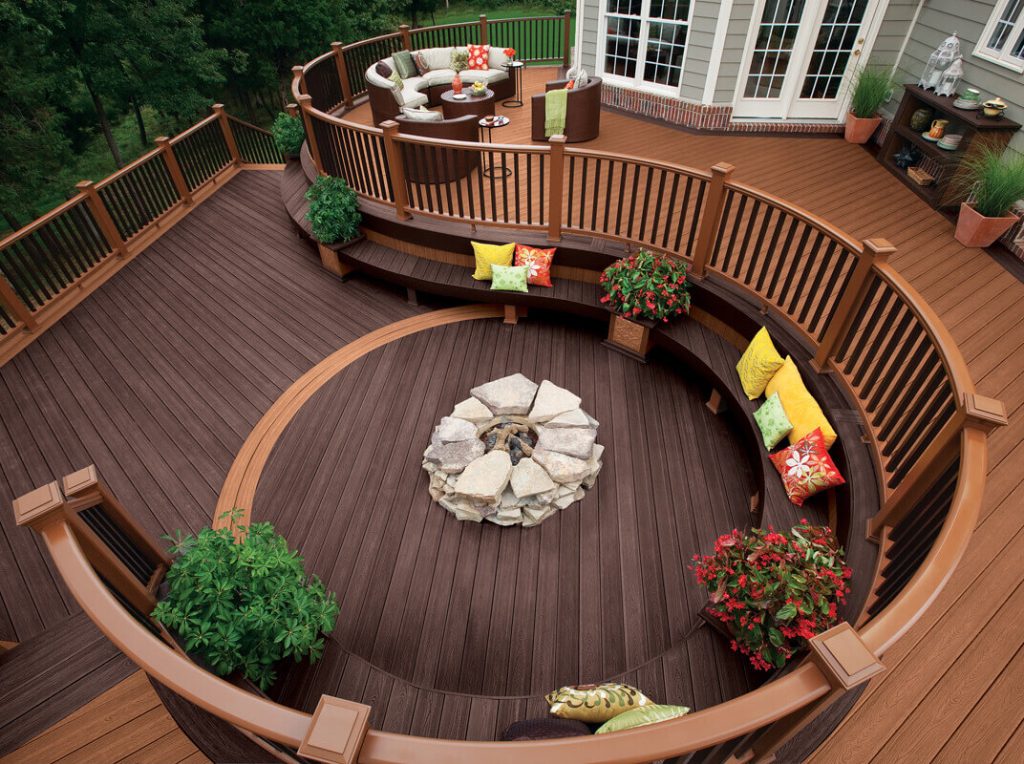
DIY or Professional Deck Painting for Your Composite Decks?
DIY deck painting may seem like a cost-effective option, but it takes a lot of time, effort, and skill to paint a deck correctly. An unskilled DIY project could result in an uneven coat or heavy spots that affect the aesthetic appeal of your deck. Deck painting professionals, on the other hand, have the expertise, equipment, and quality products to ensure your deck receives proper coverage and a professional finish lasting longer.
A painting professional can access high-quality paint and tools, creating a long-lasting finish that can withstand weather changes, sun exposure, and general wear and tear. Professional deck painters can also attend to every aspect of a painting project, including preparation, protection of surrounding areas, and the clean-up required when the project is complete.
Hiring a professional deck painting company might be slightly more expensive than DIY painting. Still, the advantages of a high-quality finish and longer-lasting results may be worth the additional cost in the long run.

